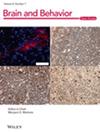Analysis and Identification of Therapeutic Targets for Neuronal Regeneration After Ischemic Stroke
Abstract
Objective
The aim of this study is to analyze and identify genes associated with neuronal regeneration after ischemic stroke (IS) and to predict potential therapeutic targets for neuronal regeneration after IS using bioinformatics analysis methods.
Methods
The GSE137482 and GSE208121 datasets were obtained from the Gene Expression Omnibus (GEO) database, and the differentially expressed hub genes that showed decreased expression in GEO and increased expression in neuronal regeneration after IS were identified as key genes. To identify the key genes, functional enrichment and Protein–Protein Interaction (PPI) network analysis were conducted. The expression levels of the key genes were characterized by real-time quantitative polymerase chain reaction (RT-qPCR) and western blot in neuron-induced cell models. Additionally, possible regulatory networks of the key genes were analyzed.
Results
The screening process yielded 24 differentially expressed pivotal genes, which were predominantly enriched in processes related to epithelial cell proliferation regulation and hormone response. The PPI analysis yielded five key genes (Npas4, Nr4a3, Nr4a1, Egr4, and Egr1), which may exert regulatory roles primarily through peptide and peptide hormone responses. RT-qPCR and western blot assays confirmed that the expression levels of the key genes were elevated in the neuron-like differentiated cell model. However, these findings were inhibited by additional treatment with hypoxia. The analysis of the key gene regulatory network revealed that EGR1 and NR4A1 might regulate hub genes by utilizing their transcription factor properties, with EGR1 being the predominant regulator. The validation results from our cellular model indicated that upregulating EGR1 promotes neuronal-like differentiation in SH-SY5Y cells.
Conclusion
EGR1 could potentially serve as a therapeutic target for neuronal regeneration following IS.


 求助内容:
求助内容: 应助结果提醒方式:
应助结果提醒方式:


